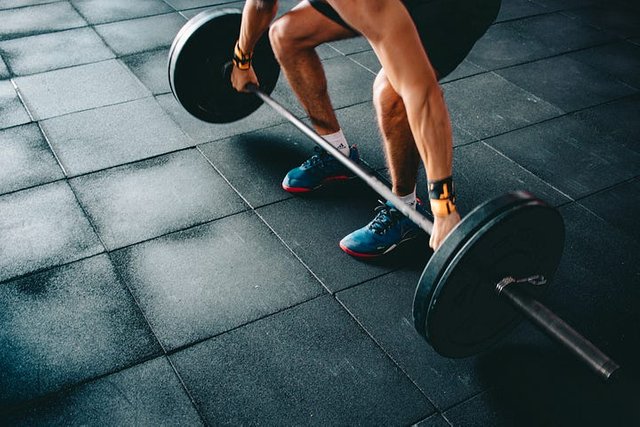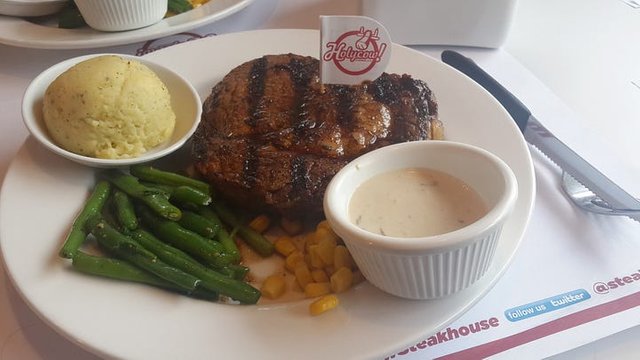The Simplest Way to a Flat Stomach - 5 Simple Ideas to Achieve Your Dream Physique

You’ve been there before. You’ve tried all the different diets out there, yet can’t seem to stick to it longer than a few weeks. You make it a point to go to the gym regularly, yet when the routine gets disrupted, you don’t make it back for awhile. You try supplements and fat burners. You limit yourself to one meal a day. You try EVERYTHING you see on TV or on social media marketed as a surefire way to lose fat GUARANTEED.
If it were really that easy, why hasn’t it worked for everyone yet?
You would think that if following the Jenny Craig diet, exercising with the shake weight, and taking CLA and fish oil with every meal were as successful as they’re advertised, literally everyone would be all over it. Yet, nearly 2/3 of Americans remain overweight as they cycle through diet after diet, exercise plan after exercise plan, supplement after supplement, failure after failure to lose those stubborn 20 pounds.
The truth is, weight loss is not rocket science. It’s not calculus or coding either. The path to weight loss is actually very simple. Rather than doing extensive research on all the different diet programs, trying every exercise class under the sun, and spending hundreds on fat burners and cleansing teas, incorporate these five simple ideas into your day, and watch the image you see in the mirror change for the better.
- Calorie Deficit

This could be the end of the article right here.
The single most important factor when it comes to losing weight is ensuring you burn more calories than you consume.
A calorie is a unit of energy; our body consumes calories throughout the day to allow our organs to function properly, and to keep our bodies moving. We need calories to survive. The problem many of us face is that we consume more calories than we burn on a given day. Any additional calories not utilized by the body during the day are converted to a long-term energy source (fat). When this occurs for days, weeks, months, years on end, we gain more body fat than we wish.
The key is to ensure we consume less calories than our bodies utilize on a daily basis.
The number of calories we utilize during the day is highly individualized, and is referred to as our Total Daily Energy Expenditure (TDEE). There are four contributing factors to our TDEE:
Basal Metabolic Rate (BMR)- the amount of energy (in calories) our bodies utilize for essential body functions. This is dependent on our age, sex, height, weight, and body composition.
Exercise Activity Thermogenesis (EAT)- the amount of energy we utilize during formal exercise (going to the gym, playing a sport, running, etc.)
Non-exercise Activity Thermogenesis (NEAT)- the amount of energy we utilize during every day, non-exercise related activities (walking to/from your car, brushing your teeth, standing waiting for the subway, etc.)
Thermal Effect of Food (TEF): the amount of energy required to digest and metabolize the food we eat.
*Note- this will likely be a topic of a future article, stay tuned.
The most simple way to ensure we remain in a caloric deficit is to ensure we eat less than we utilize during the day. Maintaining a caloric deficit is the premise behind EVERY successful diet or nutrition program we undertake. Diet programs such as Atkins, keto, paleo, intermittent fasting, Whole30, etc. only are effective if they are incorporated in a way in which we maintain a caloric deficit. If these diets are not diets you feel you can sustain every day for the long-term, you may want to avoid them altogether. As long as you are in a caloric deficit, you will lose weight.
- Resistance Training

Resistance training refers to any type of exercise where you have to overcome an external resistance. The most common form of resistance training is weight training. However, bodyweight exercises, resistance bands, and other modalities work just as well.
Resistance training increases your EAT; therefore, increases the amount of calories utilized during the session. However, its main impact on our body occurs outside of the gym.
After approximately 6–8 weeks of consistent (that is the key word) resistance training, our muscles begin to hypertrophy (grow). As a result of increasing the size of our muscles, our body has to metabolize more energy to keep them functioning properly, and keep up with the increased demands we’re placing on our muscles. As a result, our BMR increases (aka, we increase the amount of energy our bodies require just to function normally). Therefore, if the number of calories we consume per day remains the same, but our BMR increases, we enter into more of a deficit, since we are utilizing more than we are consuming.
Resistance training also alters our body composition- which is the actual key when it comes to attaining the physique we want. This is much more salient than the number on the scale. More muscle mass + less body fat = we look better.
Cardio training, like running, walking, and swimming are also incredibly useful tools to ensure you enter a caloric deficit. However, long-duration, low-intensity cardio exercise does not have the same long-term effects on muscle size and metabolism. While this is a useful tool (that I always endorse as part of a well-rounded exercise routine), resistance training has been shown as a superior to fat loss and improvements in body composition and physique.
- Consume Enough Protein

Proteins- more specifically the amino acids that form proteins- are the building blocks for muscle growth. It is protein that allows our muscles to heal and grow after exercise.
Protein in the diet is also one of the best ways to stay full for longer. High-protein food sources such as chicken, turkey, eggs, and other meats are usually very low calorie, high protein, and very satiating compared to other sources of food. By consuming more of these products throughout the day, you’re likely to consume fewer calories, stay fuller longer, and, as a result, remain in a caloric deficit.
How much protein is enough for you?
The minimum Recommended Dietary Allowance (RDA), aka the minimum you should be consuming, regardless of how much or how little you exercise, is .8 grams per kilogram of your bodyweight. So if you weigh 175 pounds (79.5 kg), the minimum you should be consuming per day is about 64 grams of protein. However, the National Academy of Sports Medicine (NASM) recommended daily protein intake for weight loss is anywhere from 1.6 to 2.2 grams per kilogram of bodyweight (for that same 175 pound person, that equates to 127 to 175 grams of protein per day). It may sound like a lot, but by incorporating 30–40 grams of protein for all three meals in a day, plus an addiitonal 10–20 grams in a snack, you’ll be at your goal for the day.
- Get 8 Hours of Sleep

This is the most underrated of all of the fat loss tools, but it is arguably the most important one, in addition to maintaining a caloric deficit. Most of us hardly come close to achieving 8 hours of sleep per night. Yet sleep is absolutely critical, and non-negotiable, when it comes to our bodies looking and functioning the way they’re supposed to.
8 hours of sleep is the closest thing to a super-healer that we’ve found. Sleep allows our muscles to heal, our GI system to digest, our brains to flush out toxins, and our bodies/minds to function at their best day in and day out.
The more sleep we lose, the more time we have to make decisions that take away from our health and fitness goals. We are more likely to overeat. We are more likely to consider bad habits like drinking. We are less likely to recover from an exercise session (if we have the alertness and focus to have one). We will become more anxious, depressed, and/or stressed, leaving us likely to skip our workout.
Furthermore, our bodies won’t respond to the good things we do because our metabolic process will be rushed and crammed into a shorter time frame. All of these detrimental effects begin to occur with anything less than or equal to 7 hours of sleep. Those effects are also compounded (not additive) for every additional minute less of sleep we get. (I highly recommend the book “Why We Sleep” by Dr. Matthew Walker, for an inside look at the importance of sleep and detriment of sleep deprivation).
If you don’t have time for 8 hours of sleep, make time. Your body will not function to the best of its ability without it. Sleep is non-negotiable.
- Do These Things Consistently
This is the part that nobody realizes until they actually achieve the goals they set out for. You can use all of the tips I’ve shared previously, or you can ignore me and choose whichever diet plan, exercise routine, or supplement you want, whichever one you enjoy the most. However, until you implement these ideas consistently (I’m talking, every single day, or very close to it), you’re not going to achieve the results you’re looking for.
You are the sum of the decisions you make on a daily basis, and the habits you perform day in and day out. It took you months or years of bad nutritional habits, not enough exercise, and researching/trying different fads with little success to get to the point you’re at now. As a result, it will likely take a long time to get to where you want to be. However, if you make decisions and habits that you enjoy, it will be much much easier to do them consistently, which is really the key to getting the physique you want.
Staying in a caloric deficit is easiest when you can combine lower-calorie, nutrient-dense foods that you enjoy, with moderation including foods you enjoy that may be more calorie-dense. For example, one of my staple nutrient-dense foods that I can eat nearly every day is a turkey sandwich on wheat bread, with a slice of provolone cheese, veggies, and a balsamic glaze for flavor. It’s a very low calorie, high protein option that I never get tired of. In addition, my treat food of choice is french fries. I set up my nutritional habits so that I can eat my staple sandwich regularly, and still have room for fries with dinner at least once per week. Finding a way to incorporate healthy nutritional habits I enjoy has been key to losing over 50 pounds in my lifetime, staying in a weight range I’m comfortable with, and looking/feeling good.
While the road to a flat stomach isn’t always easy necessarily, the concepts are quite simple. Utilizing more than you consume, exercising regularly, fueling your recovery with protein and 8 hours of sleep, and remaining consistent are the keys to losing weight and achieving a flat stomach.
Incorporate these ideas, be consistent, be patient, and watch as you achieve the body you’ve always wanted.